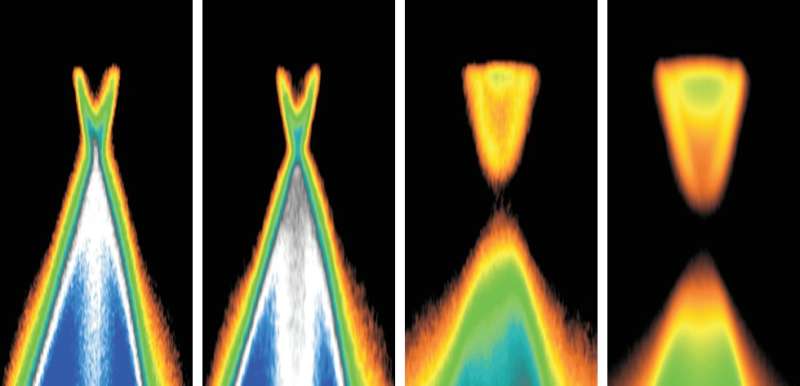Missing link between new topological phases of matter discovered

Physicists at BESSY II have investigated a class of materials that exhibit characteristics of topological insulators. During these studies, they discovered a transition between two different topological phases, one of which is ferroelectric, meaning a phase in the material that exhibits spontaneous electric polarisation and can be reversed by an external electric field. This could also lead to new applications such as switching between differing conductivities.
The HZB researchers studied crystalline semiconductor films made of a lead, tin and selenium alloy (PbSnSe) that were doped with tiny amounts of the element bismuth. These semiconductors belong to a new class of materials called topological insulators, materials that conduct very well at their surfaces while behaving as insulators internally. Doping with 1 to 2 percent bismuth enabled them to observe a new topological phase transition. The sample changes to a particular topological phase that also exhibits ferroelectricity. This means that an external electric field distorts the crystal lattice, whereas conversely, mechanical forces on the lattice can create electric fields.
The effect can be used to develop new functionality, which is also of interest for potential applications. Ferroelectric phase-change materials are employed in DVDs and flash memory, for example. An electrical voltage displaces atoms in the crystal, transforming the insulating material into a metallic one.
The bismuth doping in the PbSnSe films investigated at HZB served as a perturbation. The number of electrons in bismuth does not fit well in the periodic arrangement of atoms within the PbSnSe crystal. "Tiny changes in the atomic structure give rise to fascinating effects in this class of materials," says HZB researcher Dr. Jaime Sánchez-Barriga, principal investigator coordinating the project.
Following detailed analyses of the measurements, the researchers concluded that the bismuth doping causes a ferroelectric distortion in the lattice that also changes the allowable energy levels of the electrons. "This problem kept us puzzled during several beamtimes until we reproduced the scientific results on a whole new set of samples," says Sánchez-Barriga. "Potential applications could arise through ferroelectric phases—ones that have not been thought of before. Lossless conduction of electricity in topological materials can be switched on and off at will by electrical pulses or by mechanical strain," says Prof. Oliver Rader, head the department Materials for Green Spintronics at HZB.
More information: Partha S. Mandal et al, Topological quantum phase transition from mirror to time reversal symmetry protected topological insulator, Nature Communications (2017). DOI: 10.1038/s41467-017-01204-0
Journal information: Nature Communications
Provided by Helmholtz Association of German Research Centres





















